
Manhattan, known regionally as the City and the urban core of the New York metropolitan area, is the most densely populated of the five boroughs of New York City, and coextensive with the County of New York, one of the original counties of the U.S. state of New York. Manhattan serves as the city's economic and administrative center, cultural identifier, and historical birthplace. The borough consists mostly of Manhattan Island, bounded by the Hudson, East, and Harlem rivers; as well as several small adjacent islands. Manhattan additionally contains Marble Hill, a small neighborhood now on the U.S. mainland, separated from the rest of Manhattan by the Harlem Ship Canal and later connected using landfill to the Bronx. Manhattan Island is divided into three informally bounded components, each aligned with the borough's long axis: Lower, Midtown, and Upper Manhattan.
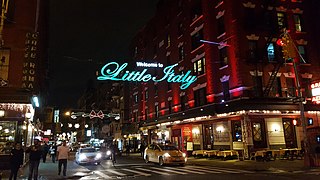
Little Italy is a neighborhood in Lower Manhattan in New York City, once known for its large Italian population. It is bounded on the west by Tribeca and Soho, on the south by Chinatown, on the east by the Bowery and Lower East Side, and on the north by Nolita.

Little Italy is a general name for an ethnic enclave populated primarily by Italians or people of Italian ancestry, usually in an urban neighborhood. The concept of "Little Italy" holds many different aspects of the Italian culture. There are shops selling Italian goods as well as Italian restaurants lining the streets. A "Little Italy" strives essentially to have a version of the country of Italy placed in the middle of a large non-Italian city. This sort of enclave is often the result of periods of immigration in the past, during which people of the same culture settled together in certain areas. As cities modernized and grew, these areas became known for their ethnic associations, and ethnic neighborhoods like "Little Italy" blossomed, becoming the icons they are today.
Interstate 278 (I-278) is an auxiliary Interstate Highway in New Jersey and New York in the United States. The road runs 35.62 miles (57.32 km) from U.S. Route 1/9 (US 1/9) in Linden, New Jersey, to the Bruckner Interchange in the New York City borough of the Bronx. The majority of I-278 is in New York City, where it serves as a partial beltway and passes through all five of the city's boroughs. I-278 follows several freeways, including the Union Freeway in Union County, New Jersey; the Staten Island Expressway (SIE) across Staten Island; the Gowanus Expressway in southern Brooklyn; the Brooklyn–Queens Expressway (BQE) across northern Brooklyn and Queens; a small part of the Grand Central Parkway in Queens; and a part of the Bruckner Expressway in the Bronx. I-278 also crosses multiple bridges, including the Goethals, Verrazzano-Narrows, Kosciuszko, and Triborough Bridges.
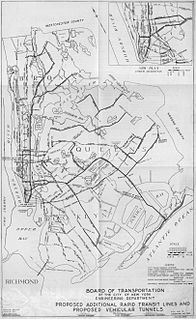
Since the opening of the original New York City Subway line in 1904, and throughout the subway's history, various official and planning agencies have proposed numerous extensions to the subway system. The first major expansion of the subway system was the Dual Contracts, a set of agreements between the City of New York and the IRT and the BRT. The system was expanded into the outer reaches of the Bronx, Brooklyn, and Queens, and it provided for the construction of important lines in Manhattan. This one expansion of the system provided for a majority of today's system.

East Harlem, also known as Spanish Harlem or El Barrio, is a neighborhood of Upper Manhattan, New York City, roughly encompassing the area north of the Upper East Side and bounded by 96th Street to the south, Fifth Avenue to the west, and the East and Harlem Rivers to the east and north. Despite its name, it is generally not considered to be a part of Harlem.

New York City's demographics show that it is a large and ethnically diverse metropolis. It is the largest city in the United States with a long history of international immigration. New York City was home to over 8.3 million people in 2019, accounting for over 40% of the population of New York State and a slightly lower percentage of the New York metropolitan area, home to approximately 23.6 million. Over the last decade the city has been growing faster than the region. The New York region continues to be by far the leading metropolitan gateway for legal immigrants admitted into the United States.

Third Avenue is a north-south thoroughfare on the East Side of the New York City borough of Manhattan, as well as in the center portion of the Bronx. Its southern end is at Astor Place and St. Mark's Place. It transitions into Cooper Square, and further south, the Bowery, Chatham Square, and Park Row. The Manhattan side ends at East 128th Street. Third Avenue is two-way from Cooper Square to 24th Street, but since July 17, 1960 has carried only northbound (uptown) traffic while in Manhattan; in the Bronx, it is again two-way. However, the Third Avenue Bridge carries vehicular traffic in the opposite direction, allowing only southbound vehicular traffic, rendering the avenue essentially non-continuous to motor vehicles between the boroughs.

The geography of New York City is characterized by its coastal position at the meeting of the Hudson River and the Atlantic Ocean in a naturally sheltered harbor. The city's geography, with its scarce availability of land, is a contributing factor in making New York the most densely populated major city in the United States. Environmental issues are chiefly concerned with managing this density, which also explains why New York is among the most energy-efficient and least automobile-dependent cities in the United States. The city's climate is temperate.
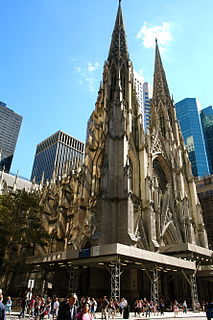
The Irish community is one of New York City's major and important ethnic groups, and has been a significant proportion of the city's population since the waves of immigration in the late 19th century.

New York City is composed of five boroughs: The Bronx, Brooklyn, Manhattan, Queens, and Staten Island. Each borough is coextensive with a respective county of New York State. The boroughs of Queens and the Bronx have the same borders as the counties of the same name. The other three counties are named differently from their boroughs.
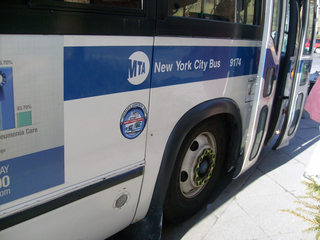
MTA Regional Bus Operations operates local and express buses serving New York City in the United States out of 29 bus depots. These depots are located in all five boroughs of the city, with one located in nearby Yonkers in Westchester County. 21 of these depots serve MTA New York City Transit (NYCT)'s bus operations, while the remaining eight serve the MTA Bus Company. These facilities perform regular maintenance, cleaning, and painting of buses, as well as collection of revenue from bus fareboxes. Several of these depots were once car barns for streetcars, while others were built much later and have only served buses. Employees of the depots are represented by local divisions of the Transport Workers Union of America (TWU), particularly the TWU Local 100 and 101, or of the Amalgamated Transit Union (ATU)'s Local's 726 for all depots in Staten Island, 1056 for Casey Stengel, Jamaica, and Queens Village Depots, and 1179 for JFK & Far Rockaway Depots.
The West Bronx is a region in the New York City borough of the Bronx. The region lies west of the Bronx River and roughly corresponds to the western half of the borough.

Since its founding in 1625 by Dutch traders as New Amsterdam, New York City has been a major destination for immigrants of many nationalities who have formed ethnic enclaves, neighborhoods dominated by one ethnicity. Freed African American slaves also moved to New York City in the Great Migration and the later Second Great Migration and formed ethnic enclaves. These neighborhoods are set apart from the main city by differences such as food, goods for sale, or even language. Ethnic enclaves provide inhabitants security in work and social opportunities, but limit economic opportunities, do not encourage the development of English speaking, and keep immigrants in their own culture.

The first Brooklyn Chinatown, was originally established in the Sunset Park area of the New York City borough of Brooklyn. It is one of the largest and fastest growing ethnic Chinese enclaves outside of Asia, as well as within New York City itself. As this Chinatown is rapidly evolving into an enclave predominantly of Fuzhou immigrants from Fujian Province in China, it is now increasingly common to refer to it as the Little Fuzhou or Fuzhou Town of the Western Hemisphere; as well as the largest Fuzhou enclave of New York City.
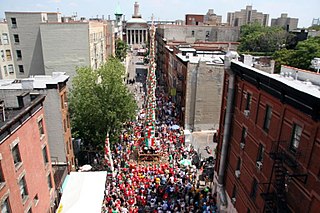
Giglio Society of East Harlem is a non profit Italian-American society located in East Harlem, Manhattan, New York City, that sponsors an annual feast honoring their patron saint, Saint Anthony.














